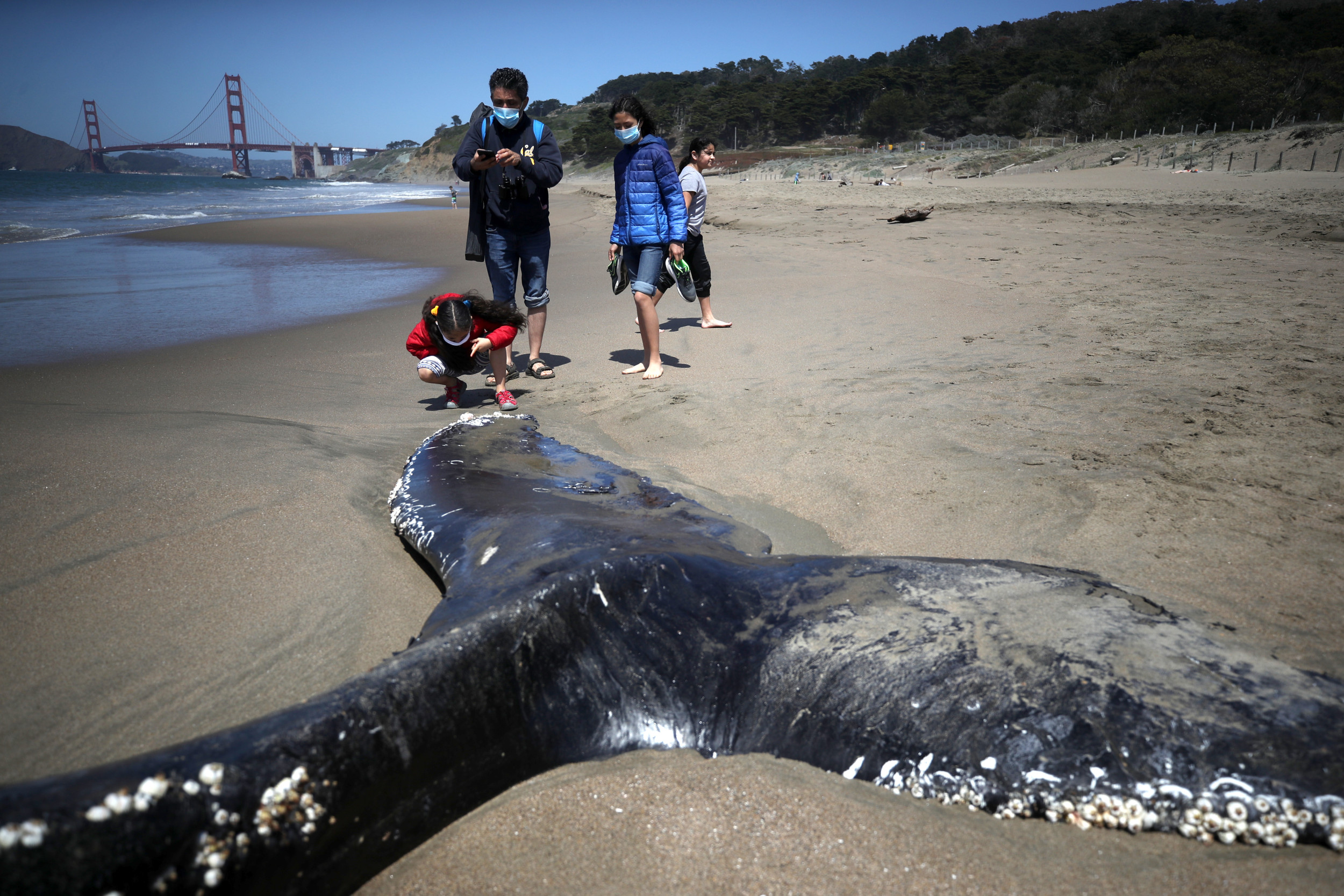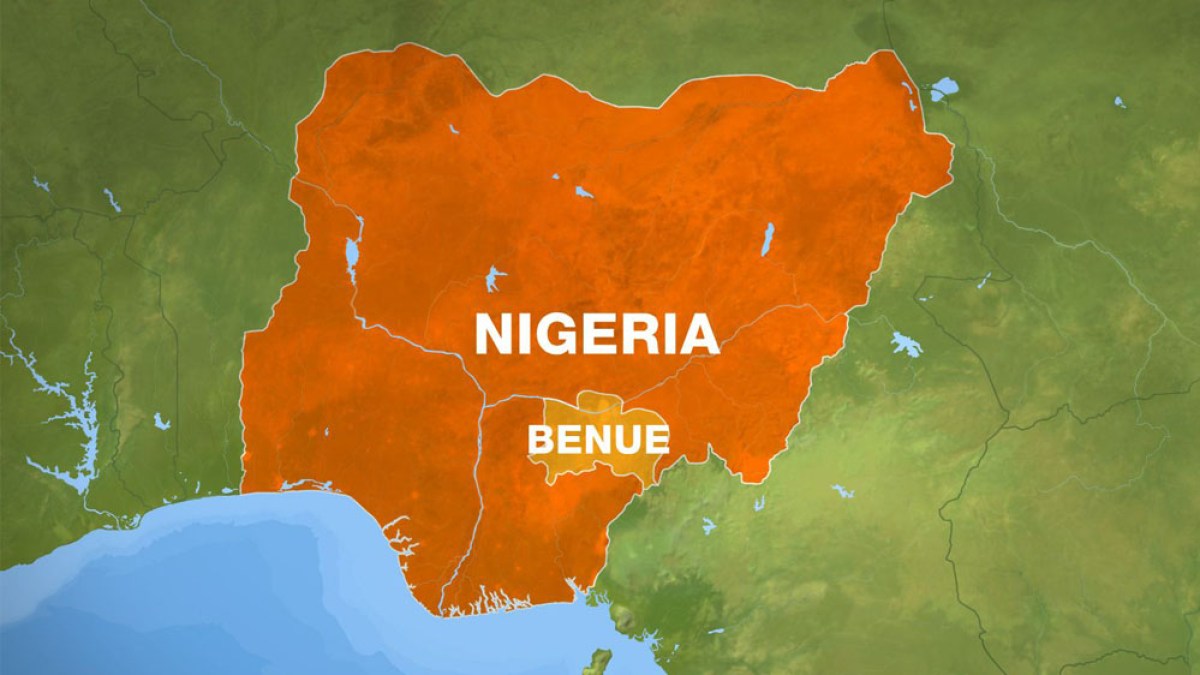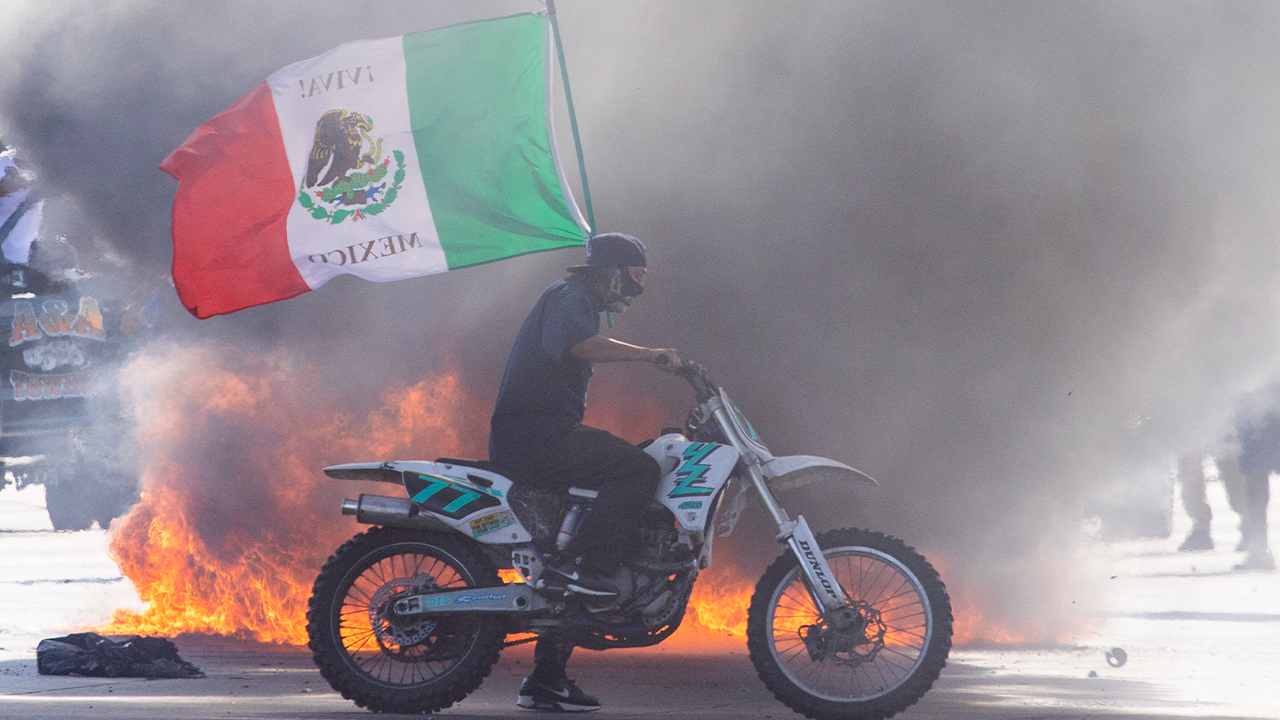Science
Scientists Detect Shape-Shifting Along Earth’s Solid Inner Core

The inner core at the center of the Earth, a ball of iron and nickel about 1,500 miles wide, may not be perfectly solid.
A new study finds evidence that the inner core’s outer boundary has noticeably changed shape over the past few decades.
“The most likely thing is the outer core is kind of tugging on the inner core and making it move a little bit,” said John Vidale, a professor of earth sciences at the University of Southern California.
Dr. Vidale and his colleagues reported their findings on Monday in the journal Nature Geoscience.
That adds to the mysteries about the planet’s center. Geophysicists have previously reported that the inner core does not spin at exactly the same rate as the rest of Earth. They also showed that the pace of rotation changes — the inner core appeared to be spinning slightly faster than the outer layers a couple of decades ago, and now it is spinning slightly slower.
The inner core is the deepest of Earth’s geological layers. The crust — the layer that we live on — is just a few miles thick. Below that, filling up 84 percent of the planet, is the 1,800-mile-thick mantle, which is soft enough in places to flow up and down and generate the forces that push the continents around. Between the mantle and the inner core is the liquid outer core.
Scientists of course cannot cut into Earth and directly observe its insides. Instead, their knowledge is inferred from the vibrations generated by earthquakes that pass through the planet. The speed and the direction of the seismic vibrations change depending on the density and the elasticity of the rocks.
For this study, Dr. Vidale and his colleagues looked at earthquakes in the South Sandwich Islands, a volcanic chain in the South Atlantic Ocean.
So many earthquakes happen there that sometimes a new event is almost identical in magnitude and location to one that occurred years earlier.
The scientists identified more than 100 such “earthquake pairs,” analyzing readings from 1991 to 2004 at two arrays of seismometers more than 8,000 miles away from the islands, one near Fairbanks, Alaska, the other in Yellowknife, Canada.
The analysis originally aimed to improve on earlier work that suggested a slowing of the inner core’s spin. But the scientists did not understand aspects of the signals at the Yellowknife array.
“Basically, the wiggles are different,” Dr. Vidale said.
By coincidence, for some of the pairs, the inner core was in the same orientation during both quakes.
Identical earthquake vibrations passing through the identical part of the Earth should have produced identical seismic signals at Fairbanks and Yellowknife. At Fairbanks, that was true, but at Yellowknife the signals were different.
Because Yellowknife is somewhat closer to the South Sandwich Islands than Fairbanks is, the seismic waves from the islands’ earthquakes did not travel as deeply into the inner core as those reaching Fairbanks. That suggested something had changed near the outer boundary of the inner core.
Turbulent flow in the outer core or gravitational pull from denser parts of the mantle could have deformed the inner core boundary, which might account for the change in the seismic signals, Dr. Vidale said.
“We expect it’s soft because it’s near melting point,” he said. “So it’s no surprise if it deforms.”
The new findings will not be the last on the subject. “The offered interpretation is sound,” said Hrvoje Tkalcic, a professor of geophysics at the Australian National University who was not involved with the research, “although it is not the only possible explanation, as the authors acknowledge.”
In recent years, geophysicists have argued over whether differences in the seismic signals are caused by a change in the rotation rate or by a change in the shape of the inner core. “This study thus reconciles the last debate by proposing a combination of both causes,” Dr. Tkalcic said.
Lianxing Wen, a professor of geosciences at Stony Brook University in New York who in 2006 reported possible changes of shape at the inner-core boundary, remains unconvinced that the inner core spins at a rate different from that of the rest of Earth.
Dr. Wen said the Yellowknife data was inconsistent with that hypothesis. “Ordinarily, such inconsistencies should lead to an abandonment of the original inconsistent interpretation,” he said.
A change in shape, without any change in the rotation rate, was enough to explain the seismic data, Dr. Wen said.
Even Dr. Vidale is not completely convinced he is correct. “We’re pretty sure we were right, but this isn’t a bulletproof paper,” he said. “How sure? I sort of put it at 90 percent.”
Dr. Tkalcic said more data was needed to resolve the question, which “can be achieved by building seismological infrastructure in remote areas of the planet, including the ocean floor.”
Xiaodong Song, a professor at Peking University in China who in the mid-1990s was one of the first to propose that the inner core was spinning at a different speed from that of the Earth’s surface, agreed.
“This new study,” Dr. Song said, “should motivate a new round of exploration into strange behaviors at the heart of the planet.”

Science
Pressure is mounting for soil testing post-fire cleanup. The Newsom administration is downplaying the concerns

Elected officials in California are calling on the Federal Emergency Management Agency and the Newsom administration to pay for soil testing on properties destroyed in the Eaton and Palisades wildfires, underscoring the public health risk and financial burdens that could be faced by survivors seeking to rebuild in Altadena and Pacific Palisades.
FEMA, the agency leading the wildfire recovery efforts, has come under heavy criticism for its decision not to test properties for contaminants after removing wreckage and up to 6 inches of top soil. That policy differs from how California has handled virtually all wildfire recoveries in the recent past.
After every major wildfire since 2007, federal and state disaster agencies have conducted soil sampling to ensure that debris-cleared properties do not contain unhealthy levels of lead and other toxic metals. In these cases, at properties where agencies detected high levels of contaminants, they typically deployed cleanup crews to remove another layer of soil, and then would perform another round of soil testing. This would be repeated until testing showed that the soil met state standards.
Following the 2025 L.A. wildfires, however, FEMA has repeatedly refused to pay for soil testing, contending that removing wildfire debris and up to 6 inches of topsoil from portions of destroyed homes is sufficient to eliminate any immediate health threats.
This month, U.S. Rep. Judy Chu (D-Pasadena) led a contingent of 28 federal legislators in writing a letter demanding that FEMA reassess its decision. The letter, sent June 3, calls for federal funding for soil testing and for further remediation at properties with soil contamination above California’s standards.
In a separate letter, sent Thursday, state Sen. Ben Allen (D-Santa Barbara) and three other state legislators urged California environmental regulators to step in and conduct soil sampling if federal disaster agencies continue to resist soil testing protocols. The letter recommends that state officials tap a $2.5-billion emergency relief package signed by Gov. Gavin Newsom in January, which includes funding for debris cleanup and post-fire assessments.
Allen’s letter said the state’s decision to leave burned-down homes untested “will reverse precedent and lower standards for future disasters.” Without comprehensive government-led soil testing, the letter argued, homeowners would be left to pay for soil sampling themselves or risk returning to a property with unsafe levels of contamination.
“It is deeply unjust that this responsibility has fallen to fire survivors — already burdened by the challenges of total loss recovery — simply because federal partners like FEMA and the U.S. Army Corps of Engineers have failed to lead,” write Allen and his co-signatories in the letter. “The State of California now has the opportunity to fill that gap with leadership that centers science, transparency, and community needs.”
In February, the Newsom administration asked FEMA to reconsider its decision not to conduct post-cleanup soil testing, stressing that fire-related contamination can remain undetected and pose public health risks, even after cleanup crews finish their first pass at a property. But federal officials swiftly rejected the request, and instead suggested that state and local officials should perform this work.
Since then, the pressure has continued for California officials to step up.
Last month, a coalition of environmental researchers wrote a letter to the Newsom administration, urging state agencies pay for soil testing.
The Newsom administration appears to be walking back its concerns about lingering fire-related contamination. In a June 6 letter replying to those researchers, CalEPA Secretary Yana Garcia downplayed the risks of lingering contamination from the Eaton and Palisades wildfires.
Although air quality and soil testing have found high levels of lead downwind of the Eaton fire, Garcia said that some of this soil contamination could have resulted from the historical use of leaded gasoline in cars and heavy industry.
“It is in this environment, not a clean slate, that the Palisades and Eaton Fires occurred,” she wrote in her letter.
Soil testing carried out by Los Angeles Times journalists in March provided the first evidence that homes cleaned by federal cleanup crews still contained elevated levels of lead and arsenic. Soon after, the Los Angeles County Department of Public Health also published preliminary data finding 27% of soil samples collected at already-cleaned homes still had lead above state standards for residential properties.
Despite these soil sampling results, Garcia signaled she is satisfied with the federal cleanup.
“Sampling results so far are demonstrating the effectiveness of the existing clean-up approach,” Garcia wrote in the letter.
(The health department denied an L.A. Times public records request seeking the raw data showing the extent of the soil contamination detected, saying the results had yet to be finalized. The department also declined requests for a copy of its contract with Roux Associates, including how much the county had paid the consultant to perform the soil sampling.)
Garcia stressed that blood testing around the wildfire-affected communities showed overall exposure was low. She did not directly respond to the researchers’ request to pay for soil testing for the L.A. wildfires.
Sen. Allen and the three state legislators who cosigned his public letter are seeking more answers from state environmental agencies. The letter calls for state environmental agencies to convene a public meeting by the end of June to discuss post-wildfire soil testing protocols and plans for the L.A. wildfires.
CalEPA officials did not immediately respond to a request for comment.
Science
Former Cedars-Sinai OB-GYN surrenders license after sexual abuse complaints

Former Cedars-Sinai Medical Center obstetrician-gynecologist Barry J. Brock has surrendered his medical license following an accusation of negligent care from the state medical board.
Brock, 75, signed an agreement late last month to give up the license he has held since 1978, rather than contest an accusation the Medical Board of California filed in September regarding a former patient’s treatment. The surrender took effect on Wednesday.
While Brock “doesn’t admit any factual allegations,” his attorney Tracy Green said, he elected to surrender his license rather than invest time and money into a hearing.
Under the terms of the agreement, Brock is barred from legally practicing medicine in California for the rest of his life.
Brock retired from medicine in August. Since then, at least 176 women have filed lawsuits alleging that Cedars-Sinai and other facilities where Brock worked knowingly concealed his sexual abuses and misconduct, including medically unjustifiable procedures that at times resulted in lasting physical complications.
Brock has denied all allegations of impropriety. The OB-GYN was a member of the Cedars-Sinai physician network until 2018 and retained his clinical privileges there until mid-2024.
Cedars-Sinai confirmed in July that it suspended Brock’s hospital privileges after receiving “concerning complaints” from former patients. His privileges were terminated a few months later.
“The type of behavior alleged about Dr. Barry Brock is counter to Cedars-Sinai’s core values and the trust we strive to earn every day with our patients,” the medical center said in a statement. “We recognize the legal process must now take its course, and we remain committed to Cedars-Sinai’s sacred healing mission.”
The accusation that led to the surrender of his license focused on a patient who sought treatment in 2018 for a blighted ovum, a form of miscarriage in which the fertilized egg fails to develop into an embryo.
According to the complaint, the patient reported to Brock’s office in September 2018 for a dilation and curettage to remove remaining tissues from her uterus.
Brock ordered the patient to undress in front of him, the complaint stated, and didn’t wear gloves during the procedure, which was done without a chaperone present.
The patient experienced severe pain during the visit and bled for two months afterward, the complaint said, and no follow-up care was provided. When she visited a physician’s assistant in November 2018, the complaint said, she learned that Brock had failed to complete the dilation and curettage successfully, and she had to undergo the process a second time to remove the remaining tissue.
The complaint alleged that Brock didn’t administer sufficient pain medication and failed to properly complete the procedure or follow up with pathology findings.
While Brock’s license surrender resolves this accusation, he still faces the civil lawsuits.
Suits were filed on behalf of 167 women last year, and nine more women sued the former physician earlier this month, alleging that Brock groped their breasts and genitals inappropriately during appointments, often with bare hands, and made sexually harassing comments.
“This is why these civil lawsuits and these women coming forward … are so, so important. He can’t avoid this,” said Lisa Esser, an attorney representing the nine plaintiffs. “He’s going to be held accountable.”
Science
State rescinds suspension efforts for troubled nursing home in Hollywood

The California Public Health Department has dropped efforts to suspend the license of a Hollywood nursing home whose actions were found to have led to two patient deaths in recent years.
Brier Oak on Sunset was among seven Los Angeles County facilities that received notice last month that the state was moving to suspend their licenses.
At the time, the state believed all seven companies had received at least two “AA” violations within the last two years, a spokesperson for the Public Health Department said.
An AA violation is a relatively rare penalty issued for errors that contribute substantially to a resident’s death. California law allows the suspension or revocation of a nursing home’s license once a facility gets two such violations within a 24-month period.
Although Brier Oak received its AA violation notices 22 months apart, the residents’ deaths took place about 26 months apart, state records show.
“We recently determined that Brier Oak’s Notice was based on citation issuance date, not the date of the incidents that gave rise to the citations,” the health department said in a statement. “Therefore, this Notice of Suspension has been rescinded.”
Brier Oak on Sunset didn’t immediately respond to a request for comment.
The state investigation found that staff oversights at Brier Oak led to the deaths of two residents in 2022 and 2024.
In August, a patient died after rolling off a bed while her nurse was tending to a different patient, the state said in its citation report, which noted that paramedics found the woman lying on the floor in a pool of blood.
In May 2022, a patient died roughly 50 hours after her admission to Brier Oak. An investigation determined that staff neglected to administer crucial medications, the state said.
In a September 2022 phone interview, the patient’s family member told state investigators that “Resident 1 ‘did not get her medications for two days [from admission] and staff let her die,’” the state wrote in its report. The family member continued: “She did not deserve to die.”
The patient’s family was awarded $1.29 million in arbitration this month after a judge found that the facility was severely understaffed at the time of her arrival and should not have admitted her.
“Respondent’s Facility acted with recklessness in that they knew it was highly probable that their conduct would cause harm, and they knowingly disregarded this risk,” Superior Court Judge Terry A. Green wrote in the interim arbitration award.
License suspension efforts are still proceeding against Antelope Valley Care Center in Lancaster, Ararat Nursing Facility in Mission Hills, Golden Haven Care Center in Glendale, Kei-Ai Los Angeles Healthcare Center in Lincoln Park, Santa Anita Convalescent Hospital in Temple City and Seacrest Post-Acute Care Center in San Pedro.
Attorneys for Ararat said that the suspension was “unwarranted” and that it will be appealing. The other facilities didn’t respond to requests for comment.
-

 West1 week ago
West1 week agoBattle over Space Command HQ location heats up as lawmakers press new Air Force secretary
-

 Technology1 week ago
Technology1 week agoiFixit says the Switch 2 is even harder to repair than the original
-

 Business1 week ago
Business1 week agoHow Hard It Is to Make Trade Deals
-

 Movie Reviews1 week ago
Movie Reviews1 week agoPredator: Killer of Killers (2025) Movie Review | FlickDirect
-

 Politics1 week ago
Politics1 week agoA History of Trump and Elon Musk's Relationship in their Own Words
-

 News1 week ago
News1 week agoAmid Trump, Musk blowup, canceling SpaceX contracts could cripple DoD launch program – Breaking Defense
-

 World1 week ago
World1 week agoMost NATO members endorse Trump demand to up defence spending
-

 Finance1 week ago
Finance1 week agoChinese lenders among top backers of “forest-risk” firms


















